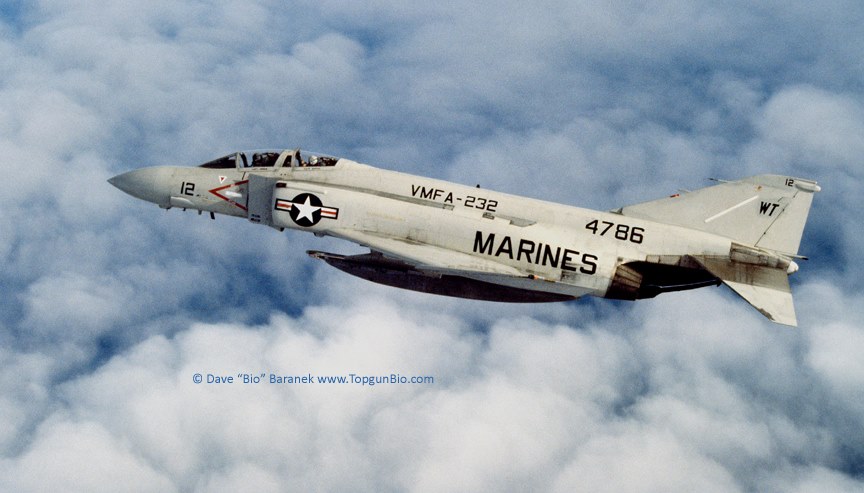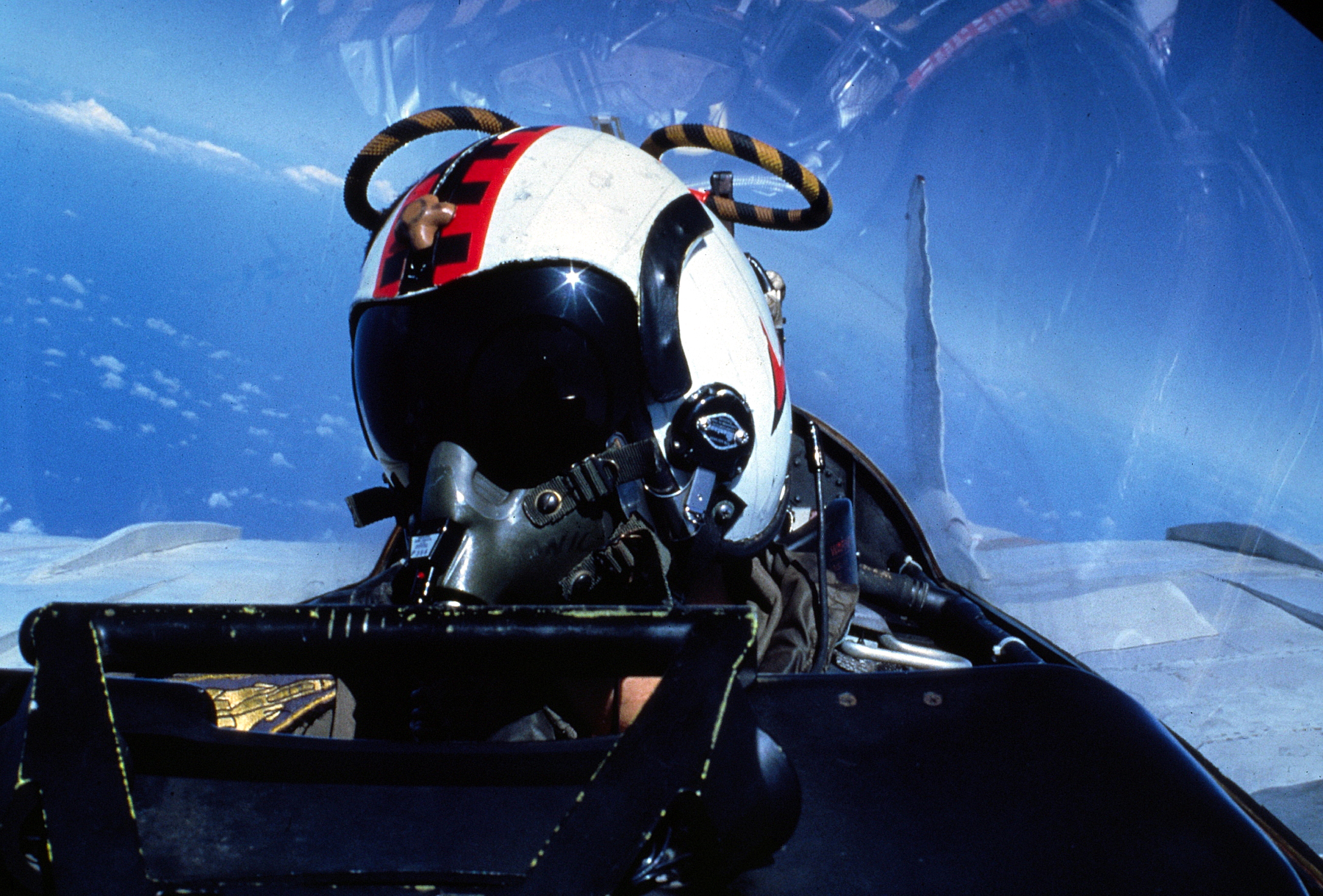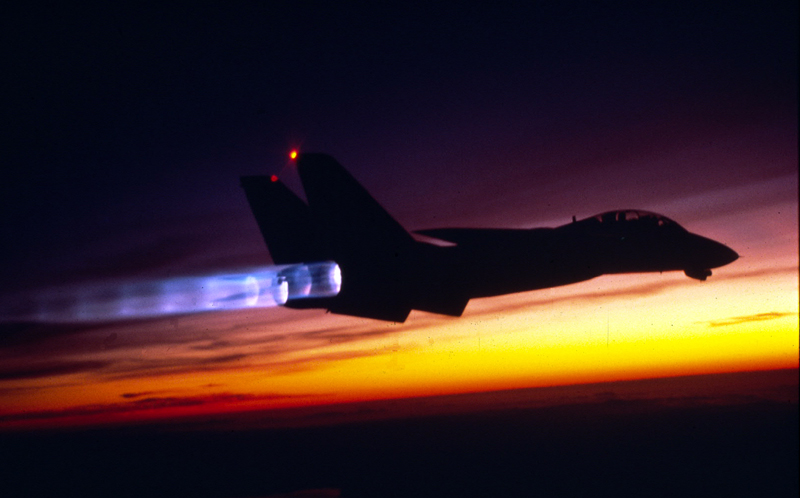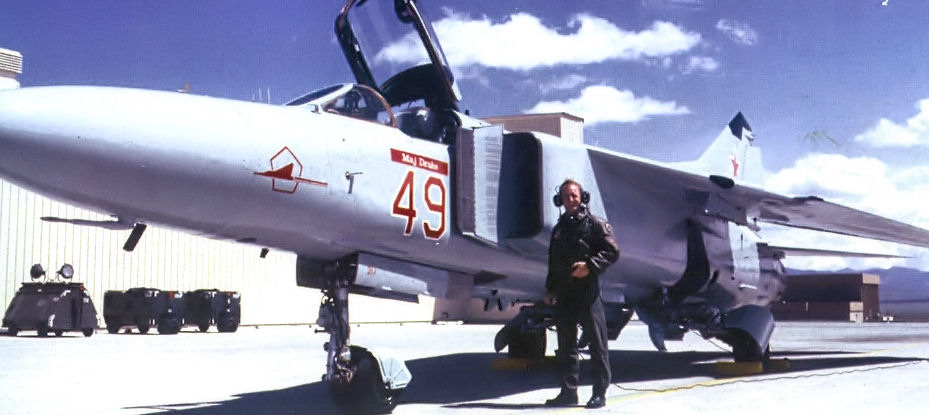“As the Phantom neared the end of twenty-five years as a front-line fighter with the U.S. Navy, its aircrews wanted to show they still had it. Meanwhile, we Tomcat crews wanted to demonstrate the superiority of our still-new fighter,” Dave “Bio” Baranek, a Tomcat RIO with twenty years of experience
F-14 Tomcat Vs F-4 Phantom.
Early in the 1980s, US defense analysts were seriously concerned about the Soviet-built MiG-23 Flogger. The MiG-23 outperformed the MiG-17 and MiG-21 in a number of crucial areas, including radar, missiles, and top speed. The Flogger was a very capable interceptor, and because it was among the first threat aircraft types that could fire missiles against American aircraft while being tracked by radar, the threat it posed was significantly increased.
Its somewhat limited maneuverability was a drawback. Yet, throughout the 1980s, the MiG-23 was starting to appear more frequently in the air forces of possible American enemies, and because it was the first time fighter pilots faced that possibility, their capacity to fire missiles at American aircraft prior to the merging generated significant worry.
West Coast F-14 Tomcat squadrons (at the time based at the Naval Air Station Miramar) undertook a series of flights for the “Rising Fighter” research effort to combat the danger posed by MiG-23s. Project Rising Fighter was designed to investigate strategies for combating the new Flogger.
Rising Fighter consisted of 2vUNK scenarios: two Tomcats doing intercepts versus an unspecified (UNK) number of F-4 Phantoms from regular Navy Squadrons, according to Tomcat RIO with twenty years of experience Dave “Bio” Baranek in his book Before Topgun Days: The Making of a Jet Fighter Instructor. All of the jets could use their radar to simulate firing missiles during the intercepts; successful launches would result in kills. The opposing formations would meet, and any remaining aircraft would engage in a dogfight.

In December 1982, Bio participated in a number of flights for Project Rising Fighter.
He recalls: “I’d been in the Fleet (VF-24 Fighting Renegades) for twenty months and had about 800 flight hours in the F-14 – a good amount of experience. More importantly […] it was only two months after completing the Topgun class. […] My pilot would be the same one I flew within Topgun: Jaws. We had honed our crew coordination to a sharp edge during challenging scenarios fighting the Topgun instructors. Now we would get another chance to practice our craft. […] It was an all-out, aggressive scenario that would require Jaws and I to use all of our skills.”
All of the sorties were conducted on the instrumented TACTS (Tactical Aircrew Combat Training System) Range near Yuma, with superior intercept control, and in real-time kill removal, as stated by Bio: “That meant that a good missile shot by either the fighters (Tomcats) or the bogeys (Phantoms) resulted in an aircraft being called ‘dead’ and immediately disengaging. Based on tactical thinking at the time, we Tomcats used only Sparrow and Sidewinder missiles, the same as the Phantoms. These missiles were roughly similar to a Flogger’s missiles, so our F-14s had little advantage in this category.”
At least for Project Rising Fighter, Baranek said that F-4 Phantoms offered a good simulation of several MiG-23 characteristics. “No restrictions were placed on tactics used by either side, so we were facing well-trained U.S. Navy pilots and RIOs. The missiles that both sides launched would be simulated, but as the Phantom neared the end of twenty-five years as a front-line fighter with the U.S. Navy, its aircrews wanted to show they still had it. Meanwhile, we Tomcat crews wanted to demonstrate the superiority of our still-new fighter.”
Tomcat crews were typically outnumbered in Project Rising Fighter sorties; their main advantages were the F-14’s superior radar, which allowed them to establish situational awareness (SA) during the intercept, and the Tomcat’s superior maneuverability “once we got to the merge. The hard part was getting there. These guys could shoot us in the face and kill us,” Bio points out.
The odds were 2v4, 2v5, or 2v6 for at least two intercepts to engagements in the majority of flights. Nonetheless, as Bio notes, “that was only how the intercept started. With the aggressive pre-merge shots and kills, both sides suffered casualties. […] Seared into my memory forever are snapshot images from a flight that started as a 2v6 and turned into a long 1v5 engagement.”

That time, during the intercept, the Tomcats killed one Phantom, but just before the merging, the F-14, which was being piloted by Cowboy and Ice (the other VF-24 aircrew that, along with Jaws and Bio, was participating in Rising Fighter), was also kill-removed.
Five Phantoms were left to be fought by Jaws and Bio alone. The furball’s most thrilling moments are relived in Bio. “It was a day with a high layer of thick clouds, softening the browns and grays of the desert during those microseconds I registered the terrain for orientation. We were flying about 450 knots when we merged with the Phantoms, and they were the same, maybe faster. I had used my radar effectively to describe their formation, and Jaws started seeing them at eight miles. ‘Tally two F-4s. Looking for the others.’
“As we flashed past their formation at 1,000 knots closing speed, Jaws immediately cranked our jet into a crushing 6.5-g left turn to get into position to take the first shots. He said, ‘Watch the guys on the right!’ The Phantoms scattered out of their formation. ‘Tally three. No threat,’ I replied.

“Through my visor, I noticed our wings sweep forward automatically as our speed decreased due to the hard turns. The high-lift leading-edge slats deployed, trembling under high g forces and turbulent airflow while we stressed our fighter in max-performance turns. At that fuel state, we weighed more than twenty-five tons.
“It wasn’t easy, but Jaws and I were in our element. We had refreshed the ‘contracts’ we developed when we went through the Topgun class, such as who looked forward and who looked back. Our weapons system use and inter-cockpit comms (ICS) were spot-on, based on practice, candid debriefs, and constant improvement. We used every system available on our Tomcat. In my general experience, the use of radar warning equipment had not been emphasized, but it was a priority for Jaws and me. I used a ‘bypass’ function so it would alert us if an F-4’s radar – which was categorized as friendly, not a threat – locked us up in preparation for a missile shot.
“We pulled more than 6 g almost constantly in the fight, but this wasn’t a problem after all of the dogfighting I had done in the past few months. Jaws called an AIM-9 Sidewinder missile shot on one Phantom and the controllers declared him killed, so he climbed away from the fight.

“A moment later Jaws called an AIM-7 Sparrow on another Phantom. Another kill. We were now 1v3.
“This memorable contest was a tight turning engagement approaching two minutes’ duration. I had to suppress my inclination to watch the ‘dogfight action’ over Jaws’s shoulder; my responsibility was the defensive lookout, behind us. Over my right shoulder, I picked up a Phantom slicing through a descending turn, a few seconds from becoming a threat, as we pursued another Phantom through a left turn. Over the ICS I told Jaws, ‘Approaching, right four (o’clock) high. Okay, hard right.’

“As Jaws broke off his attack on the jet in front of us, the irritating screech from our warning equipment announced that the Phantom had taken a radar lock. He was about to launch a missile. I made an awkward reach with my right hand to launch a few rounds of decoy flares and chaff in anticipation of the shot. We used simulated missiles, but real chaff and flares. The chaff broke his radar lock as our hard right turn neutralized his approach. We traded updates on the F-4s remaining in the fight and Jaws returned to pursuing our original target. In a few more seconds he called another missile shot and we notched another kill.
“Checking our fuel, we realized we needed to leave the area, to bug out. No Phantoms were threatening, so we headed to the southwest and extended out of their missile range. With radio calls of ‘Knock it off,’ the engagement was over.”
Bio concludes: “In the contest of Rising Fighter, it was just another event, a series of data points. When we returned to Miramar we reported the usual information – range of first radar detection, the range at initial missile launch, etc. – and objectively debriefed the engagement.
“But for me personally it has remained one of the more memorable missions from more than 3,000 hours of flying fighters.”

Photo by Dave “Bio” Baranek; MiG-23 photo: U.S. Air Force


